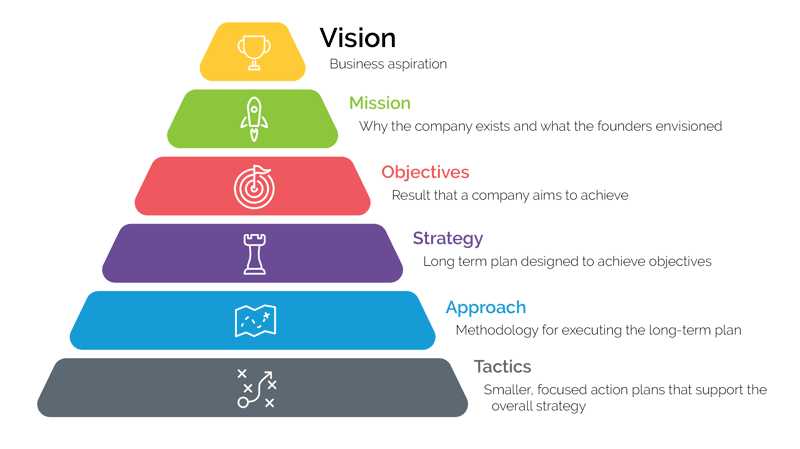8 Main Purpose of Developing a Marketing Plan
For a while now, you’ve been spearheading your organization’s content developing a marketing plan efforts. Your team’s performance has convinced management to adopt the content marketing strategies you’ve suggested.
Now your boss wants you to write and present a content marketing plan, but you’ve never done anything like this before. You don’t even know where to start.
Fortunately, we’ve handpicked the best content marketing plans to help you write a concrete plan that’s driven by data and produces results. But first, we’ll take a look at what a marketing plan is and how some of the best marketing plans include strategies that serve their respective businesses.
The purpose of a marketing plan is to write strategies in an organized manner. This will help you stay up to date and measure the success of your campaigns.
Writing a marketing plan will help you think about each campaign’s mission, buyers, budget, tactics, and results. With all of this information in one place, it will be easier for you to stay on top of a campaign. You’ll also find out what works and what doesn’t. Thus measuring the success of your strategy.
Types of Marketing Plans
- Quarterly or Annual Marketing Plans: These plans highlight the strategies or campaigns that you will undertake in a given period.
- Paid Marketing Plan – This plan could highlight paid strategies, such as native advertising, PPC, or paid social media promotions.
- Social Media Marketing Plan – This could highlight the channels, tactics, and campaigns you intend to accomplish specifically on social media.
- Content Marketing Plan – This plan could highlight different strategies, tactics, and campaigns where you will use content to promote your business or product.
- New Product Launch Marketing Plan: This will be a roadmap for the strategies and tactics you will implement to promote a new product.
Keep in mind that there’s a difference between a marketing plan and a marketing strategy.
Marketing Strategy vs. Marketing Plan
A marketing strategy describes how a company will accomplish a particular goal or mission. This includes what campaigns, content, channels, and marketing software they will use to execute that mission and track their success.
For example, while a larger plan or department might handle social media marketing, you might consider your work on Facebook as an individual marketing strategy.
A marketing plan contains one or more marketing strategies. It is the framework from which all of your marketing strategies are built and helps you connect each strategy to a larger marketing operation and business objective.
For example, your company is launching a new software product and you want customers to sign up. This requires the marketing department to develop a marketing plan that will help introduce this product to the industry and generate the desired subscriptions.
The department decides to launch a blog dedicated to this industry, a new YouTube video series to build expertise, and a Twitter account to join the conversation on this topic. All of this serves to attract an audience and convert this audience into software users.
In short, the company’s marketing plan is dedicated to bringing a new software product to market and generating subscriptions for that product. The company will execute that plan with three marketing strategies: a new industry blog, a YouTube video series, and a Twitter account.
Of course, the company could consider these three things as one giant marketing strategy, each with its own specific content strategies. How granular you want your marketing plan to be is up to you. However, each marketing plan goes through a particular set of steps in its creation. Learn what they are below.

State the mission of your business
Your first step in writing a marketing plan is to establish your mission. Although this mission statement is specific to your marketing department, it should serve as your company’s primary mission statement. Be specific, but not too specific. You have plenty of room left in this marketing plan to explain how you will acquire new customers and accomplish this mission.
For example, if your business mission is to “make a travel booking a delightful experience,” your marketing mission might be to “attract an audience of travelers, educate them about the travel industry, and convert them into users of our platform.” reservations”.
Determine the KPIs for this mission
Every good marketing plan describes how the department will track the progress of its mission. To do this, you’ll need to determine your key performance indicators (KPIs). KPIs are individual metrics that measure the various elements of a marketing campaign. These units help you set short-term goals within your mission and communicate your progress to business leaders.
Let’s take our example of a marketing mission from the previous step. If part of our mission is to “attract an audience of travelers,” we might track website visits through organic page views. In this case, “organic page views” is a KPI, and we can see our number of page views grow over time.
These KPIs will come back into the conversation in step 4.
Identify your buyers
A buyer persona is a description of who you want to attract. This may include age, gender, location, family size, and job title. Each buyer persona should directly reflect your company’s current and potential customers. Therefore, all business leaders must agree on their buyer personas.

Describe your initiatives and content strategies
Here’s where you’ll include the main points of your marketing and content strategy. Because there is a laundry list of content types and channels available to you today, you must choose wisely and explain how you’ll use your content and channels in this section of your marketing plan.
A content strategy should stipulate:
- Which types of content you’ll create? These can include blog posts, YouTube videos, infographics, and eBooks.
- How much of it you’ll create? You can describe content volume in daily, weekly, monthly, or even quarterly intervals. It all depends on your workflow and the short-term goals you set for your content.
- The goals (and KPIs) you’ll use to track each type. KPIs can include organic traffic, social media traffic, email traffic, and referral traffic. Your goals should also include which pages you want to drive that traffic to, such as product pages, blog pages, or landing pages.
- The channels on which you’ll distribute this content. Popular channels at your disposal include Facebook, Twitter, LinkedIn, YouTube, Pinterest, and Instagram.
- Any paid advertising that will take place on these channels.
Clearly define omissions from your plan
A marketing plan explains the marketing team’s focus. It also explains what the marketing team will not focus on.
If there are other aspects of your business that you aren’t serving in this particular plan, include them in this section. These omissions help to justify your mission, buyer personas, KPIs, and content. You can’t please everyone in a single marketing campaign, and if your team isn’t on the hook for something, you need to make it known.
Define your marketing budget
Your content strategy might leverage many free channels and platforms, but there are several hidden expenses a marketing team needs to account for.
Whether it’s freelance fees, sponsorships, or a new full-time marketing hire, use these costs to develop a marketing budget and outline each expense in this section of your marketing plan.

Identify your competition
Part of marketing is knowing who you are marketing against. Research the key players in your industry and consider profiling each one.
Keep in mind that not all competitors will pose the same challenges to your business. For example, while one competitor may rank high in search engines for the keywords you want your website to rank for, another competitor may have a large presence on a social network where you plan to open an account.
Summarize your plan contributors and their responsibilities
With your marketing plan fully developed, it’s time to explain who is doing what. You don’t need to delve too deeply into your employees’ daily projects, but you do need to know which teams and team leaders are in charge of specific types of content, channels, KPIs, and more.
Ready to make your own marketing plan? Get started with this free template and get inspired by the real-life examples below.

